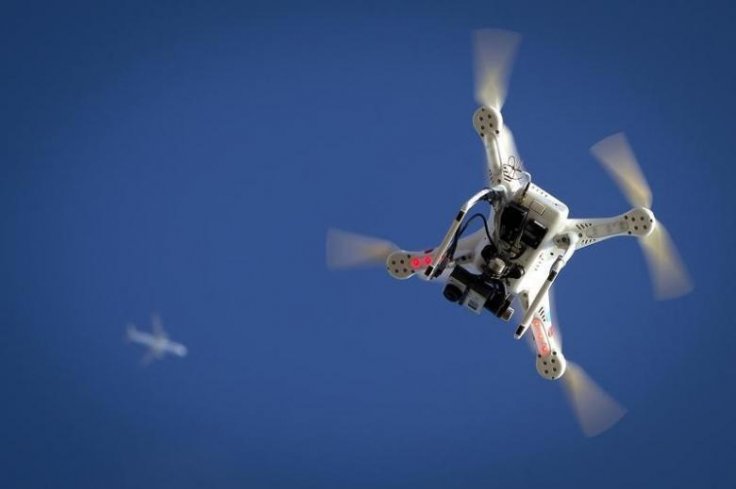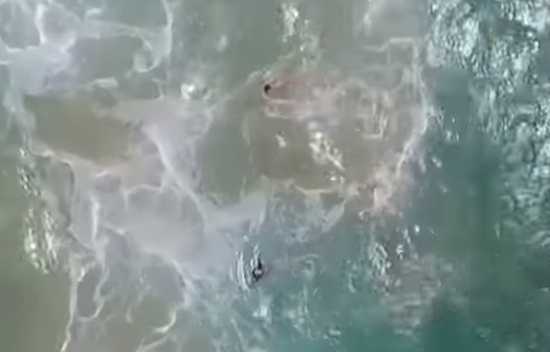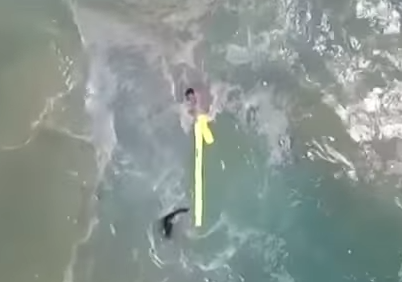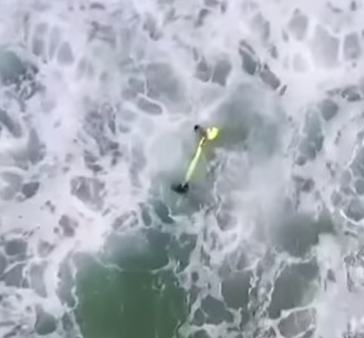
Perhaps drones can now replace lifeguards on sea beaches soon as the technology has proved to be so advanced that it could rescue swimmers now.
On Thursday, January 18, lifeguards at Lennox Head, off the coast of New South Wales, while testing drones as a part of a shark mitigation program worth $16 million, heard a distressing news of two drowning swimmers. Lifeguard supervisor Jai Sheridan released his drone 'Little Ripper' with a float and dropped it from above where the swimmers were stuck.
The swimmers aged between 15 and 17 used the float and swam through the 2,300 feet strong waves, reports BBC. Sheridan told Sydney Morning Herald that the drones proved their worth. "It is an amazingly efficient piece of lifesaving equipment and a delight to fly," he adds. The Little Ripper took only 70 seconds to complete the task.
Ben Franklin, the parliamentary secretary for northern New South Wales told Sydney Morning Herald that lifeguards would have taken six minutes to do the task. Experts are planning on investing in this venture where drones can conduct emergency operations on sea beaches. New South Wales is planning to invest $430,000 in this technology. West Australian beaches have been using drones for safety purposes for a long time.

John Barilaro, deputy premier and minister for regional New South Wales, told the Sydney Morning Herald that drones saving two lives is an amazing thing in itself and never had such a thing taken place before.
Eddie Bennet, the chief executive officer of the company and developer of this specific drone claims how the "cutting-edge technology" proved beneficial in such an emergency situation. This according to him is the "new generation of rescue services."
The rescue drones in Lennox Head are part of an alliance between Surf Life Saving NSW and the State Government. Sheridan further stated that between taking off and spotting the distressed swimmers and then deploying the floating device, the drone took only 70 seconds.
Usage of drone in Australian beaches and other purposes
Perth: Drones are used to patrol four beaches in Perth, primarily to look for sharks. In December 2017, the drones spotted a 10 feet long shark within 330 feet of a swimmer. Action was taken immediately.
Trent Robinson, one of the first lifesavers trained to pilot the drone said, "The more surveillance we have, the more chance we have of getting to people before they need to be rescued".

Post-disaster recovery: Drones are being used in Australia for post-disaster recovery as well. Last March, Australian Red Cross teamed up with drone technology experts and dropped food packets and other aid packages during natural disasters. According to the co-founder of a tech firm called WeRobotics, the benefits of this technology include helping people in geographically isolated areas and during disasters. Drones should not replace the existing norms of life-saving but "augment and complement those traditional solutions" said Patrick Meier, the co-founder of WeRobotics.
Previous rescue cases on the Sunshine Coast
Recently, a teenager was pulled from a rip and in another case, a helicopter was used to save an 18-year-old girl. 88 rescues took place in the first few weeks of summer.

How drones help lifesavers: New technology saving lives on sea-beaches
Surf Life Saving NSW project manager for unmanned aerial vehicles (UAV), Kelvin Morton, said that there exists no other lifesaving operation or organization in the world that has actually taken up this initiative. No one else is actually "doing what we're doing on the size and scale that we're doing it."
- UAV used to drop the floating device is innovative.
- The drones make it easier for lifesavers to see across the water at a height of 60 meters and can also move 50 kilometers an hour.
- Can fly 800 meters offshore and spot sharks and rips.
Men ignore safety warnings more
Ashley Robinson, the general manager of the Alexandra Headland Surf Life Saving Club said that the drones will be used along stretches of Mooloolaba and Alexandra Headland beaches where beachgoers ignore safety warnings most of the time. They walk directly from their car to the surf. Strangely most offenders happen to be older men and the head of the household who does not like 18 or 19-year-old girls dictating them to do things. They usually feel offended.

How will the drones land?
The drones will require proper council and civil aviation permits. They cannot land or take off within 30 meters of people. From reels to rescue tubes to top boards, Robinson says that the drones are the future of rescue operations. However, he believes that technology can never replace human lifesavers.
Drones to spot jellyfish, shark, rips
Surf Life Saving Australia claims that in the past year almost 116 people have drowned on Australia's coastline. Many others have faced non-fatal drowning incidents leading to health complications, and also suffered spinal, head and other injuries in the surf.
What to do when caught in a rip?
Rips are water currents which take the water onto the shore by the waves and then draws it back to the ocean. They are gripping and fast moving. They can push inexperienced swimmers in deep waters.
How to spot a rip
• Deep, dark-colored waters
• Few or no breaking waves
• Ripple surface surrounded by water
• Foamy, sandy water floating out beyond the waves
Staying calm, floating and raising one's arms can help protect one from rips.
Dumping waves can also be harmful and people should be aware of them while diving into the water. Experts advise that people should spend at least 10 minutes before diving in and watch carefully how the sea is working.
Jellyfish too can be dangerous on sea beaches, especially their sting. Tropical areas include box jellyfish and Irukandji. Since one cannot spot a jellyfish, people should be aware of the signs that signals when they might attack. For example, water droplets that don't appear to stick to the sands might be small jellyfish, clouds of small prawns moving like a school of fish can be a bunch of jellyfish as well and calm weather conditions such as a light northerly breeze can also attract jellyfish.
Shark attacks again are a common cause of panic among many. Though they are rare, one person dies every year out 19 attacked individuals. River outlets, dirty water, especially after a storm, are feeding areas for these creatures. Hence, swimmers should avoid these zones. The safest place to swim is between red and yellow flag zones on patrolled beaches.









